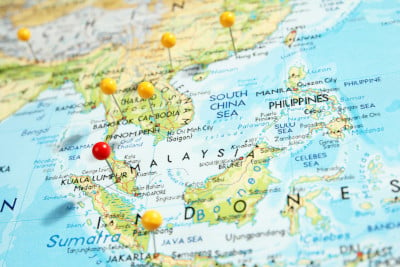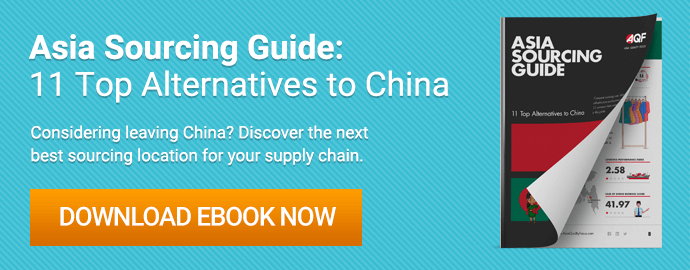 China has long fulfilled many buyers’ sourcing requirements. But its days as the “world’s factory” could be numbered. Only 20 percent of respondents in a recent U.S.-China Business Council survey expressed optimism about their future prospects in China.
China has long fulfilled many buyers’ sourcing requirements. But its days as the “world’s factory” could be numbered. Only 20 percent of respondents in a recent U.S.-China Business Council survey expressed optimism about their future prospects in China.
The U.S.-China trade war has dragged on for over a year now, without any agreement on acceptable tariff levels. Tariffs now affect a wide variety of consumer and industrial goods from China, cutting into importers’ profit margins and consumers’ purchasing power.
And even before the trade war, rising labor costs caused China to lose its cost competitiveness for many labor-intensive goods. Even if you’re not planning to exit China entirely, sourcing alternative suppliers can help minimize your supplier risk and diversify your supplier base.
Like many importers, you might lack on-the-ground sourcing knowledge in other Asian countries. Choosing an unsuitable location for your manufacturing operations can disrupt your supply chain and customer relationships. Poor infrastructure can delay shipments, or new suppliers might lack the necessary product expertise to meet quality expectations.
So how can you start this sourcing process without jeopardizing your supply chain and customer relationships?
How to compare sourcing locations in Asia
Our guide, Asia Sourcing Guide: 11 Top Alternatives to China, provides you with some of the key information you need to make the right sourcing decisions for your importing business.
This eBook covers 11 different sourcing locations, including Bangladesh, Cambodia, India, Indonesia, Malaysia, Pakistan, The Philippines, South Korea, Taiwan, Thailand and Vietnam.
Our guide is designed with importers’ concerns in mind. You’ll learn about each location’s:
- Industries and product expertise, including top exports
- Sourcing costs, including top free trade agreements, shipping costs and minimum wages
- Infrastructure quality, including transport infrastructure and customs procedures
- Labor availability, including workforce size and skills
- Ease of doing business, including business practices regarding trading across borders and paying taxes
Make the right sourcing decision for your supply chain
Only you as an importer can make the right sourcing decision for your business. There’s no “one-size-fits-all” solution for choosing an alternative sourcing location.
With the information in this guide, you can evaluate sourcing locations against your customers’ expectations for product quality, social compliance and lead times. We rate each location’s performance on an intuitive five-star scale so you can focus on the factors that matter most to you.
With our guide, you can find the best “next China” or the “+1” to your existing Chinese manufacturing operations.
Start your next sourcing journey today. Click the button below to download our guide now!







